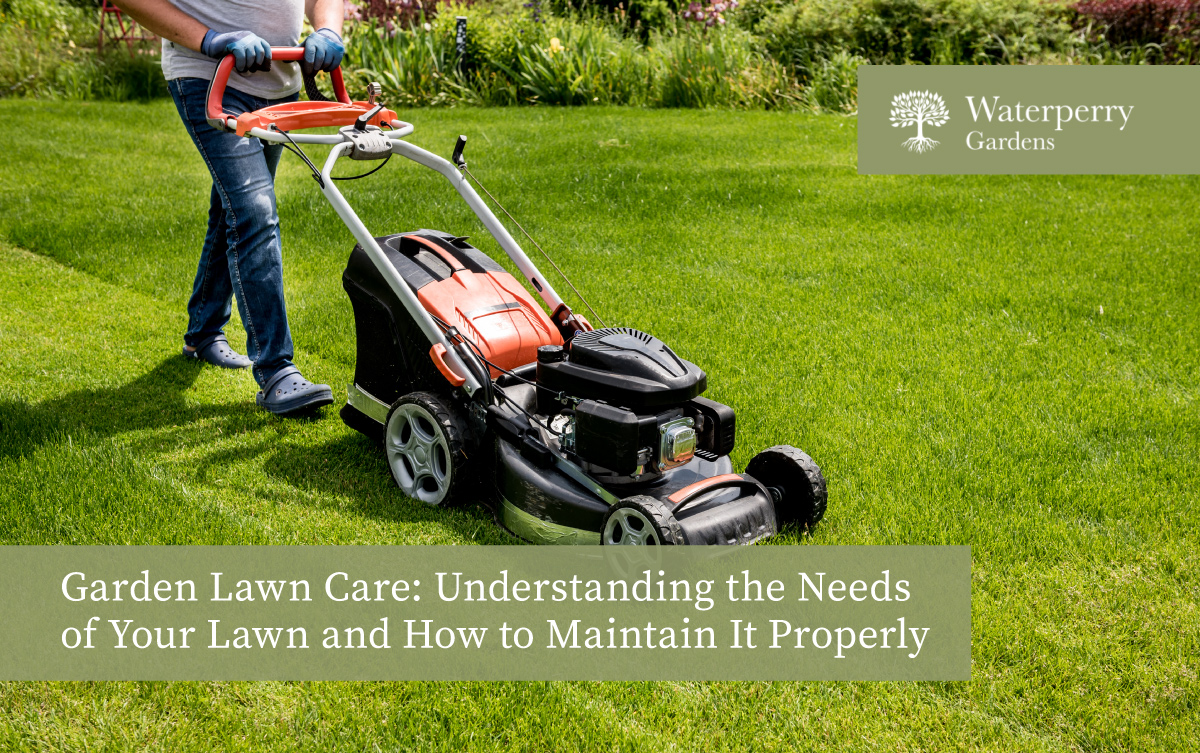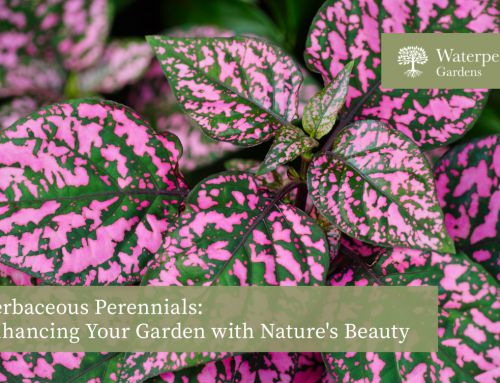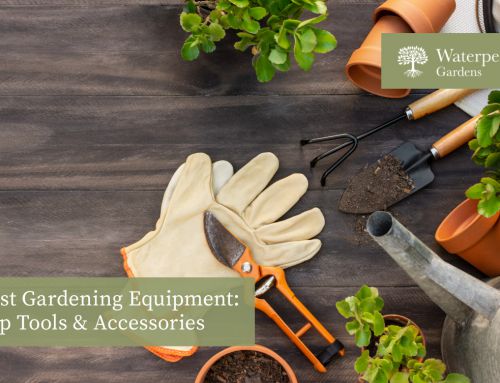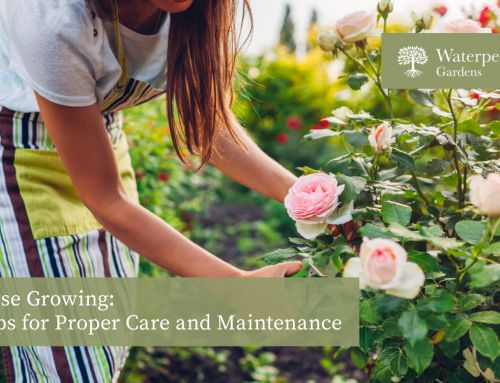Garden Lawn Care: How to Maintain It Properly
Garden lawn care is an important part of keeping a healthy and attractive lawn. It involves several activities, such as mowing, watering, fertilising, and pest control. Neglecting your lawn can lead to weed growth, pests, diseases, and an unattractive patchy brown lawn. Proper lawn care practices are crucial for achieving a beautiful and healthy lawn.
Alan Titchmarsh, a well-known British gardener and television presenter, emphasises the importance of proper garden lawn care practices for achieving a beautiful and healthy lawn. He advises that regular mowing helps maintain grass height at an optimal level while also preventing weed growth. Watering your lawn regularly ensures that it stays lush and green even during dry spells.
Fertilising your garden lawn with the right nutrients is also crucial for promoting healthy growth. Choosing the right fertiliser depends on your soil type and grass species is important.
Pest control is another critical aspect of garden lawn care. Insects such as grubs can cause significant damage to your lawn if left unchecked. Using pesticides or natural remedies like nematodes can help control these pests effectively.
Water Your Garden Lawn: Best Practices for a Lush Green Lawn
Watering is an essential part of maintaining a lush green lawn. However, it can be easy to overwater or underwater, leading to shallow root growth and increasing the risk of disease. In this section, we will discuss the best practices for watering your lawn to encourage deep root growth and maintain a healthy lawn.
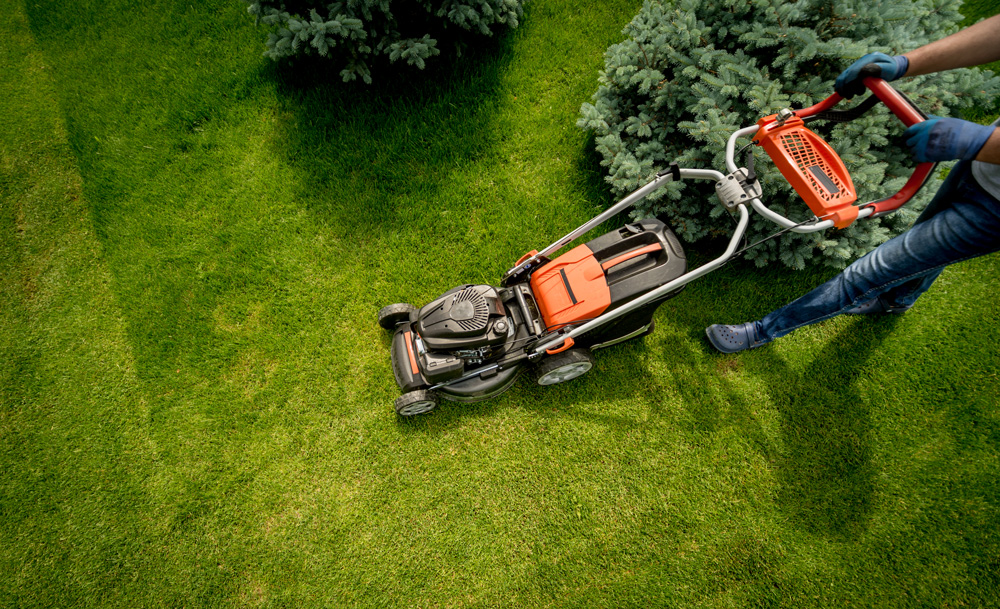
Water Deeply and Infrequently
When watering your lawn, ensure to water deeply, meaning that you should water your lawn enough to saturate the soil to a depth of 6 inches or more. By doing so, you encourage deep-root growth, which helps your grass become more resilient during droughts.
During Droughts, Water in the Early Morning or Late Evening
During droughts or very dry weather, conserving water while maintaining a healthy lawn is important. One way to do this is by watering your garden lawn early morning or late evening when it’s cooler and evaporation rates are lower. By doing so, you reduce water loss due to evaporation and ensure that your grass receives the maximum benefit from each watering session.
Take Advantage of Rainfall
Another way to conserve water while still maintaining a healthy lawn is by taking advantage of rainfall. Installing a rainwater butt or barrel or using a rain gauge can help you keep track how much water your lawn receives from rainfall. You can then adjust your watering schedule accordingly, reducing the amount of supplemental irrigation needed.
Consider Using Grey Water
Greywater is wastewater from household sources such as sinks and showers that has not come into contact with faecal matter. It can be used for irrigation purposes but must be treated appropriately before use and comply with local regulations and guidelines.
Avoid Overwatering Your Lawn
Overwatering your lawn can lead to shallow root growth and increase the risk of disease. To avoid overwatering, you should only water your lawn when needed. One way to determine if your lawn needs watering is by performing a simple test. Walk across your lawn, and if the grass springs back up, it doesn’t need watering. If the blades of grass remain flat, it’s time to water.
Use a Sprinkler System or Hose with a Spray Nozzle
When watering your lawn, it’s important to ensure an even distribution of water across your lawn. Using a sprinkler system or hose with a spray nozzle can help you achieve this goal. A sprinkler system is ideal for larger lawns, while a hose with a spray nozzle is better suited for smaller lawns.
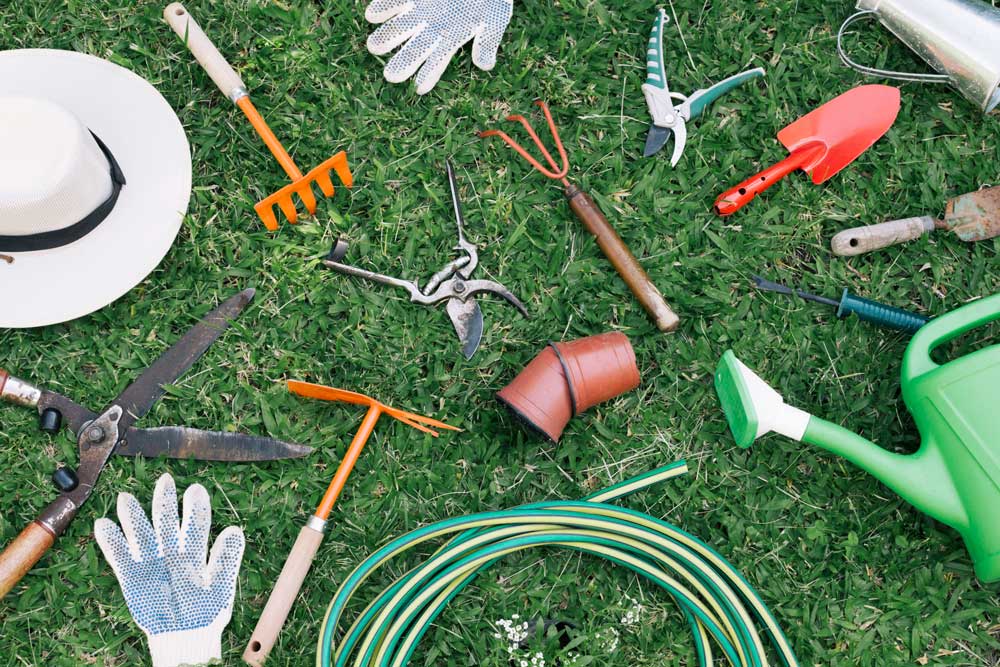
Mow Your Lawn Regularly: The Key to a Healthy and Attractive Lawn
Regular mowing is one of the most important things you can do to maintain the health and appearance of your lawn. Mowing helps keep grass blades at an even height, encouraging healthy growth and preventing weeds from taking over. Make sure you do not to cut the grass too short, as doing this can damage the roots, making your lawn more open to weeds and disease.
Use a Lawnmower with Sharp Blades
Using a lawnmower with sharp blades is crucial for preventing damage to the grass. Dull or blunt blades tear rather than slice through the grass, leaving ragged edges that are more susceptible to disease. Sharpen your mower blades or replace them once a year to keep a clean, sharp cut..
Choosing the Right Garden Machinery: A Guide to Selecting the Best Equipment for Your Lawn Care Needs
Investing in the right garden machinery can make lawn care much easier and more efficient. Here are some tips for choosing the best equipment for your needs:
Consider your lawn size.
If you have a small garden lawn, a push mower may do the job. However, if you have a much larger lawn, a riding mower or tractor may be necessary.
Think about your terrain.
If you have hills or uneven terrain, a self-propelled mower may be easier to manoeuvre than a push mower.
Look for quality and durability.
Investing in high-quality equipment will usually save you money in the longer run by lasting for a longer period of time and requiring fewer repairs.
Mow in Spring and Autumn
Mowing in spring and autumn is especially important for keeping your lawn in good condition. In spring, regular mowing helps remove dead leaves and other debris left over from winter. It also encourages new growth by allowing sunlight to reach the soil surface. In autumn, mowing helps prevent leaves from smothering the grass while encouraging root growth before winter sets in.
Mow at the Right Time
Mowing at the right time is critical for preventing wildflowers and weeds from taking over your lawn. The best time to mow is when the grass has reached about one-third higher than its desired height. Cutting more than this can cause stress on the plant while cutting less may not be enough to maintain an even height across all areas of your lawn.
Hand Mowing Is an Option
Hand mowing is an option for small lawns or areas with bare patches. A hand mower is a great way to get exercise while maintaining your lawn’s health and appearance. Hand mowers are also quieter than electric or petrol-powered machines, making them ideal for use in urban or suburban neighbourhoods.
Regular Servicing of Your Mower
Regular servicing of your mower ensures that it is in good working order when you need it most. This includes changing the oil, replacing air filters, and checking the spark plug. It’s also important to keep the blades sharp and clean to prevent damage to the grass.
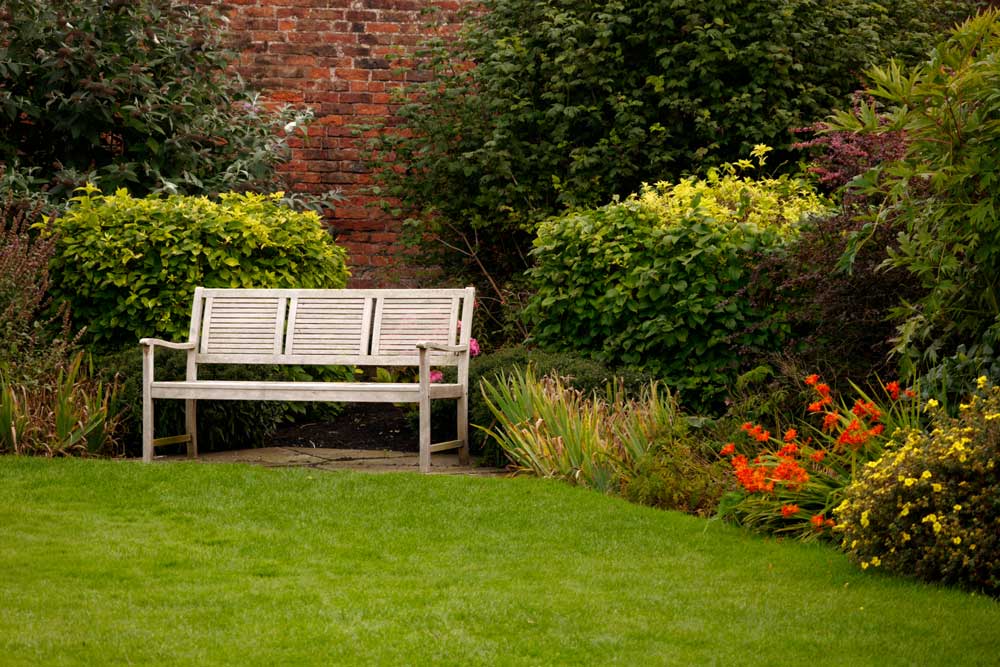
The Importance of Fertilising Your Lawn for Optimal Growth
Soil quality is a crucial factor, but without proper soil quality, even the best fertilisers may not be effective. In this section, we will discuss the importance of fertilising your lawn for optimal growth and how soil quality affects the effectiveness of fertilisers.
Fertilising provides essential nutrients that help keep your lawn healthy and green. It’s recommended to fertilise your lawn every 6-8 weeks during the growing season.
Feeding your lawn with the right fertilisers can boost its growth and health. Chemical fertilisers are commonly used to provide essential nutrients to the soil. These include nitrogen, phosphorus, and potassium – all vital elements for plant growth. However, before applying any fertiliser to your lawn, it’s important to test your soil first.
Soil testing will help you determine which nutrients are lacking in your soil and what type of fertiliser you need. This way, you can avoid over-fertilisation or under-fertilisation that could harm your lawn instead of boosting its growth.
Timing is also an important to factor climate zone and season. Generally speaking, early spring and fall are ideal times for fertilisation as these seasons promote root development and nutrient absorption.
Over-fertilising can do more harm than good so it’s important to follow recommended guidelines. Too much fertiliser can cause excessive leaf growth at the expense of root development, which weakens the plant’s overall health. Moreover, excess nitrogen from over-fertilisation can lead to environmental problems such as water pollution.
To avoid over-fertilisation or under-fertilisation issues in garden lawn care, make sure you read the instructions on the packaging carefully before applying any fertiliser on your lawn. Follow recommended application rates based on square footage and timing guidelines specified by manufacturers.
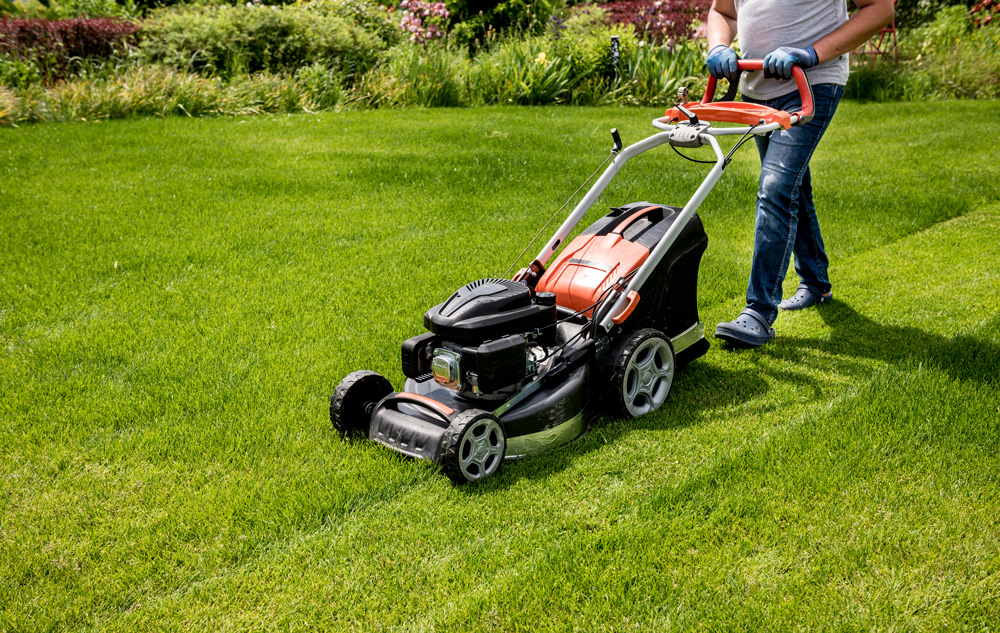
Weed Control
Weeds can quickly take over your garden lawn if left unchecked; there are several ways of controlling weeds, some may include hand-pulling, herbicides, and pre-emergent treatments.
Start with good soil.
Healthy soil is essential for a healthy garden lawn; making sure your soil has plenty of organic matter by adding compost or other organic materials will really help.
Choose the right grass for your Garden Lawn.
Different types of grass have different requirements for sunlight, water, and nutrients. Make sure you choose a type of grass that is well-suited for your climate and growing conditions.
Creating Borders and Wildflower Meadows: Adding Interest and Diversity to Your Garden Lawn Area
Adding borders and wildflower meadows can add interest and diversity to your lawn area while also providing a habitat for pollinators like bees and butterflies. Here are some tips for creating these features:
Choose native plants.
Native plants are better adapted to local growing conditions and require less maintenance than non-native species.
Plan ahead.
Before planting, make sure you have a clear plan for where your borders and meadows will be located and what plants you will use.
Why and How to Relieve Compacted Grass
Compacted grass is a common problem that can lead to poor drainage, thinning grass, and weed growth. It occurs when soil particles are pressed together, reducing the amount of space between them. This makes it difficult for air, water, and nutrients to penetrate deeper into the roots. As a result, the grass becomes stressed and weakens over time.
The most common causes of compacted grass are foot traffic, heavy equipment, and soil composition. Foot traffic from people or pets can compress the soil over time, while heavy equipment such as mowers or tractors can cause more immediate damage.
Soil composition also plays a role in how easily soil compacts. Clay soils are more prone to compaction than sandy soils because they have smaller particles that pack together tightly.
One way to relieve compacted grass is through aeration. Aeration is the process of creating small holes in the soil to allow air, water, and nutrients to penetrate deeper into the roots. There are two types of aeration: spike aeration and core aeration.
Spike Aeration vs Core Aeration
Spike aeration uses solid tines to poke holes in the soil, while core aeration removes small plugs of soil from the ground. Spike aeration is less effective than core aeration because it only creates holes without removing any soil plugs. This means there is less space for air, water, and nutrients to reach the roots.
Core aeration is more effective because it removes small plugs of soil from the ground which creates more space for air, water, and nutrients to reach the roots. The removed plugs also break down over time adding organic matter back into the soil which helps improve its overall health.
When Should You Aerate Your Lawn?
Aerating your lawn once or twice per year, depending on foot traffic level and soil composition, can help prevent compacted grass from becoming an issue in your lawn. If you have a lot of foot traffic or heavy equipment on your lawn, you may need to aerate more frequently.
It’s best to aerate your lawn in the spring or fall when the grass is actively growing. Avoid aerating during periods of drought or extreme heat as this can stress the grass even further.
By reducing soil compaction, aeration helps prevent runoff and encourages better absorption of rainfall, reducing the need for watering.
Aeration can also improve the effectiveness of fertilisers and other lawn treatments by allowing them to reach deeper into the soil.
When applied on compacted soil, these treatments may not be able to penetrate deep enough to reach the roots where they are needed most. Aeration ensures that these treatments can effectively nourish your lawn from deep within.
Fall is an ideal time for aeration as it allows your lawn to recover during cooler months before the next growing season. During fall, temperatures are cooler which means less stress on your grasses compared to summer when heat stress is at its highest level. Aerating during fall gives your grasses ample time to recover before winter sets in.
How to Control Weeds in Your Lawn: Tips and Tricks
Using Garden Tractors for Weed Control
Garden tractors are versatile tools that can be used for many lawn care tasks, including weed control. By mowing the lawn regularly with a garden tractor, you can prevent weeds from growing and spreading. However, if weeds have already taken hold in your lawn, there are several ways to use a garden tractor to remove them without damaging the grass.
Using a Garden Tractor with a Weed Control Attachment
One way to remove weeds from your lawn is by using a garden tractor with a weed control attachment. This attachment uses rotating blades or brushes to pull up weeds from the soil while leaving the grass intact. The attachment can be adjusted to different heights depending on the type of weed and the thickness of your grass.
Proper Maintenance of Garden Tractors
To ensure that your garden tractor is effective in controlling weeds, it’s important to properly maintain it. This includes sharpening the blades regularly and checking oil levels before each use. A well-maintained garden tractor will not only make weed control easier but also extend its lifespan.
Safety Precautions When Using Garden Tractors
When using a garden tractor for weed control, it’s important to follow safety precautions such as wearing protective gear and avoiding steep slopes or uneven terrain. Always read the manufacturer’s instructions before operating any machinery and keep children and pets away from the area while working.
How to Choose the Right Grass Seed for Your Lawn
Consider the Climate and Soil Type in Your Area
When choosing grass seed for your lawn, it is important to consider the climate and soil type in your area. Different types of grass thrive in different environments, so it is essential to choose a variety that will grow well in your particular location.
For example, if you live in an area with hot summers and mild winters, warm-season grasses such as Bermuda or Zoysia may be the best choice for your lawn. These types of grass are drought-resistant and can tolerate high temperatures.
On the other hand, if you live in an area with cold winters and mild summers, cool-season grasses may be more suitable. These varieties can withstand freezing temperatures and do well in cooler climates.
In addition to considering the climate, it is also important to assess the soil type in your area. Some types of grass prefer sandy soils while others do better in clay soils. Knowing what type of soil you have can help you choose a variety that will grow well and thrive on your property.
Determine the Amount of Sunlight Your Lawn Receives
Another crucial factor to consider when choosing grass seed is the amount of sunlight your lawn receives. Different types of grass require varying levels of sunlight to grow properly.
If your lawn gets plenty of direct sunlight throughout the day, then sun-loving varieties may be ideal choices. However, if your lawn has shaded areas where sunlight is limited, then shade-tolerant varieties may be better suited for those areas.
Choose a Grass Seed That Is Appropriate for Foot Traffic
The amount of foot traffic that your lawn receives is another critical factor to consider when selecting grass seed. If you have kids or pets who frequently play outside on the lawn, then it’s essential to choose a variety that can withstand heavy use without getting damaged easily.
For high-traffic areas, consider grass seed blends that include durable varieties. These types of grass can withstand heavy foot traffic and still look great.
Look for Grass Seed Blends That Include a Mix of Different Types of Grass
When selecting grass seed, it’s also important to choose a blend that includes a mix of different types of grass. This approach can help ensure optimal growth and resilience in your garden lawn.
For example, some blends may include both cool-season and warm-season varieties, which can provide year-round coverage and adaptability to changing weather conditions.
Check the Label to Ensure the Grass Seed Is Free from Weeds
Before purchasing any grass seed, always check the label to make sure it is free from weeds and other unwanted plants. Some low-quality seeds may contain weed seeds or other contaminants that can negatively impact your lawn’s health and appearance.
Make sure you read the label carefully before making your purchase to ensure that you are getting high-quality seeds that will produce healthy and vibrant turf.
By following these simple yet effective garden lawn care tips, you’ll be on your way to achieving a beautiful and healthy lawn that will make all of your neighbours jealous!


